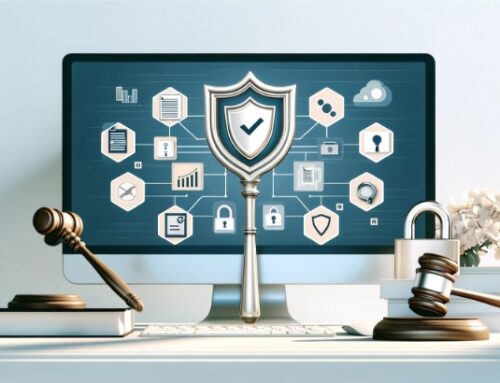Are you struggling with messy customer data in your CRM system? Implementing CRM data cleansing solutions can help you clean up and organize your customer information, ensuring accuracy and efficiency. Like a professional organizer tidying up a cluttered space, these steps will guide you through transforming your data from chaos to order. First, you’ll need to assess the current state of your data, identifying any errors or inconsistencies. Next, you’ll develop a strategy for cleansing the data, outlining your specific actions. Then, it’s time to select the right tools to help you execute the cleansing process effectively. Once the cleaning is complete, don’t forget to validate and test the data to ensure its accuracy. Finally, you’ll migrate the clean data into your CRM system, ready to make better-informed decisions.
Data Assessment
Gather all relevant information about your current data quality to assess your CRM data. Data profiling is a crucial step in this process, as it involves analyzing and understanding your data’s structure, content, and quality. Using data profiling techniques, you can uncover inconsistencies, errors, duplicates, and other issues that may impact the accuracy and reliability of your data.
Various data profiling techniques can help you gain insights into your CRM data. One technique is statistical profiling, which involves analyzing the distribution, frequency, and patterns of your data values. This can help identify outliers, missing values, and data distributions that deviate from expected patterns.
Another technique is rule-based profiling, where predefined rules are applied to your data to identify violations and inconsistencies. For example, you can define rules to check for data integrity, such as ensuring that all customer names are in the correct format or that email addresses are valid.
Additionally, semantic profiling can be used to analyze the meaning and context of your data. This involves understanding the relationships between data elements and identifying semantic inconsistencies or contradictions.
Data Cleansing Strategy Development
To develop your data cleansing strategy, you will need to assess the insights gained from data profiling and determine the steps and actions required to improve the quality of your CRM data. Here are some critical considerations for developing your strategy:
-
Define your objective: Identify the goals you want to achieve through the data cleansing process. This could include improving data accuracy, eliminating duplicate records, or enhancing data completeness.
-
Establish data quality metrics: Define the criteria that will be used to measure the quality of your CRM data. This could involve assessing data accuracy, consistency, validity, and completeness.
-
Identify data cleansing techniques: Determine the techniques and methods you will use to cleanse your CRM data. This could include processes like data standardization, data validation, data enrichment, and data deduplication.
-
Develop a data cleansing plan: Create a detailed plan that outlines the steps and timeline for implementing your data cleansing strategy. This plan should include data profiling, data cleansing, validation, and ongoing monitoring to maintain data quality.
Data Cleansing Tool Selection
Now that you have developed your data cleansing strategy, it is time to select the appropriate tool to execute it. When choosing a data cleansing tool, several critical criteria must be considered. You should evaluate the tool’s functionality, scalability, ease of use, and compatibility with your CRM system. Additionally, it is helpful to research popular CRM cleansing tools such as Salesforce Data.com, HubSpot CRM, and Zoho CRM, as they have proven track records in the market. Proper tool selection can lead to significant benefits, including improved data quality, increased efficiency, and enhanced customer satisfaction.
Key Criteria for Selection
When selecting a data cleansing tool, you should consider specific critical criteria. These criteria will ensure that the tool you choose can effectively improve data quality and support your CRM implementation. Here are four critical factors to consider:
- Functionality: The tool should have a wide range of data cleansing capabilities, such as duplicate detection and merging, standardization, validation, and enrichment.
- Integration: It should seamlessly integrate with your CRM system, allowing easy data exchange and synchronization.
- Scalability: The tool should be able to handle large volumes of data and grow with your business needs.
- Ease of use: Look for a tool with a user-friendly interface and intuitive features, so your team can quickly learn and utilize it effectively.
Considering these critical criteria will help you make an informed decision and choose a data-cleansing tool that aligns with your requirements and goals.
Popular CRM Cleansing Tools
It would be best to consider using popular CRM cleansing tools to implement data cleansing solutions effectively. These tools are designed to streamline cleaning and organizing your CRM data, ensuring its accuracy and integrity. These tools allow you to quickly identify and eliminate duplicate entries, correct inconsistencies, and update outdated information. Popular CRM cleansing tools such as Salesforce Data.com, Microsoft Dynamics CRM Data Quality Services, and Oracle Data Quality provide various features and functionalities to address various CRM cleansing techniques. Data cleansing plays a crucial role in improving the overall quality of your CRM data, resulting in several benefits. These include enhanced decision-making, improved customer satisfaction, increased operational efficiency, and reduced costs associated with data errors.
Benefits of Proper Selection
Consider using a popular CRM cleansing tool to ensure you benefit from proper selection and improve the quality of your CRM data. Proper implementation of a data cleansing tool can significantly impact your CRM system. Here are some benefits of selecting the right tool:
- Enhanced data accuracy: A reliable CRM cleansing tool can identify and correct errors, duplicates, and inconsistencies in your data, improving accuracy.
- Increased productivity: By automating the cleansing process, you can save time and resources, allowing your team to focus on more critical tasks.
- Better decision-making: Clean and reliable CRM data provides accurate insights and analytics, enabling informed decision-making.
- Improved customer satisfaction: With clean and up-to-date data, you can provide personalized and targeted customer experiences, enhancing satisfaction.
Data Cleansing Execution
To effectively execute data cleansing, you must be familiar with the best techniques and understand the importance of data quality. You can ensure that your CRM data is accurate, consistent, and reliable by implementing the proper techniques, such as deduplication, standardization, and validation. Improving data quality enhances your CRM system’s performance and enables better decision-making and customer relationship management.
Best Cleansing Techniques
When implementing CRM data cleansing solutions, explore the best techniques for executing data cleansing. It is essential to choose the proper data scrubbing techniques and data deduplication methods to ensure the accuracy and reliability of your CRM data. Here are four highly effective cleansing techniques to consider:
- Standardization: Normalize data formats and structures to ensure consistency and improve data quality.
- Validation: Verify data accuracy by comparing it against predefined rules and criteria.
- Parsing: Break down complex data fields into smaller, more manageable components for better analysis and organization.
- Matching: Identify and merge duplicate records to eliminate redundancies and maintain a single source of truth.
Importance of Data Quality
To ensure the effectiveness of your CRM data cleansing solution, you must prioritize the quality of your data during the execution process. Data quality analysis plays a significant role in this regard. You can identify inconsistencies, errors, or duplications in your data by conducting a thorough data quality analysis. This analysis allows you to understand the current state of your data and determine the necessary steps to improve its quality. Additionally, implementing data integrity measures is essential to maintain the accuracy and reliability of your data. These measures include implementing data validation rules, enforcing data entry standards, and regularly monitoring and cleaning your data. By prioritizing data quality, you can ensure that your CRM system operates efficiently and provides reliable insights for decision-making.
Data Validation and Testing
First, you must validate and test your CRM data cleansing solutions. This step is crucial to ensure that the solutions effectively clean and improve the quality of your data. Here are four essential aspects to consider during the validation and testing process:
-
Data Sampling: Select a representative sample of your CRM data to test the effectiveness of your data cleansing techniques. This sample should include data types and cover various scenarios to ensure comprehensive testing.
-
Data Quality Metrics: Define specific data quality metrics you want to measure. These metrics can include accuracy, completeness, consistency, and timeliness. By measuring these metrics before and after implementing your data cleansing solutions, you can evaluate their impact on data quality management.
-
Data Validation Rules: Create validation rules to check if the cleansed data meets the defined quality standards. These rules should be based on your organization’s data validation requirements and industry best practices. Implementing these rules helps ensure that only accurate and reliable data is entered into your CRM system.
-
Test Scenarios: Develop test scenarios to simulate different data scenarios and evaluate how your CRM system handles them. This includes testing for data duplication, merging, updates, and integration. Testing these scenarios allows you to identify potential issues or limitations in your data cleansing solutions.
Data Migration
To successfully implement CRM data cleansing solutions, the next step is to execute the process of migrating your data. Data migration involves transferring data from one system or platform to another. This step is crucial to ensure your cleansed data is accurately and securely transferred to your CRM system.
The first step in data migration is data mapping. This involves identifying the source of your data and mapping it to the appropriate fields in your CRM system. Data mapping helps ensure your new system transfers the correct data to the right place.
Once the data mapping is complete, the next step is data transformation. This involves converting and formatting the data to fit the structure and requirements of your CRM system. Data transformation may involve cleaning up and standardizing data, removing duplicates, and reconciling inconsistencies.
To ensure its integrity and accuracy, it is essential to thoroughly test and validate the transferred data during the data migration process. This involves comparing the migrated and original data to identify discrepancies or errors.
Frequently Asked Questions
How Long Does It Typically Take to Complete a Data Cleansing Project?
Typically, a data cleansing project can take anywhere from a few weeks to several months, depending on various factors such as the size of the data set, the complexity of the data, and the resources allocated to the project.
What Are the Potential Risks or Challenges Associated With Implementing CRM Data Cleansing Solutions?
You may encounter challenges and potential risks when implementing CRM data cleansing solutions. It is essential to address these issues early to ensure a successful implementation and maximize the solution’s benefits.
Are there any specific regulations or compliance requirements to consider when cleaning CRM data?
When cleansing CRM data, it’s crucial to consider specific regulations and compliance requirements. Ensure you adhere to industry standards and legal obligations to maintain data integrity and protect customer privacy.
How Often Should Data Cleansing Be Performed to Maintain Data Quality?
To maintain data quality, it is essential to perform data cleansing regularly. Best practices suggest that you should consider the frequency based on the specific needs of your CRM system and the rate of data changes.
What Are Some Common Indicators or Signs That Indicate the Need for Data Cleansing in a CRM System?
To improve data quality and reap the benefits of data cleansing, you must identify common indicators or signs indicating the need to clean your CRM system.




